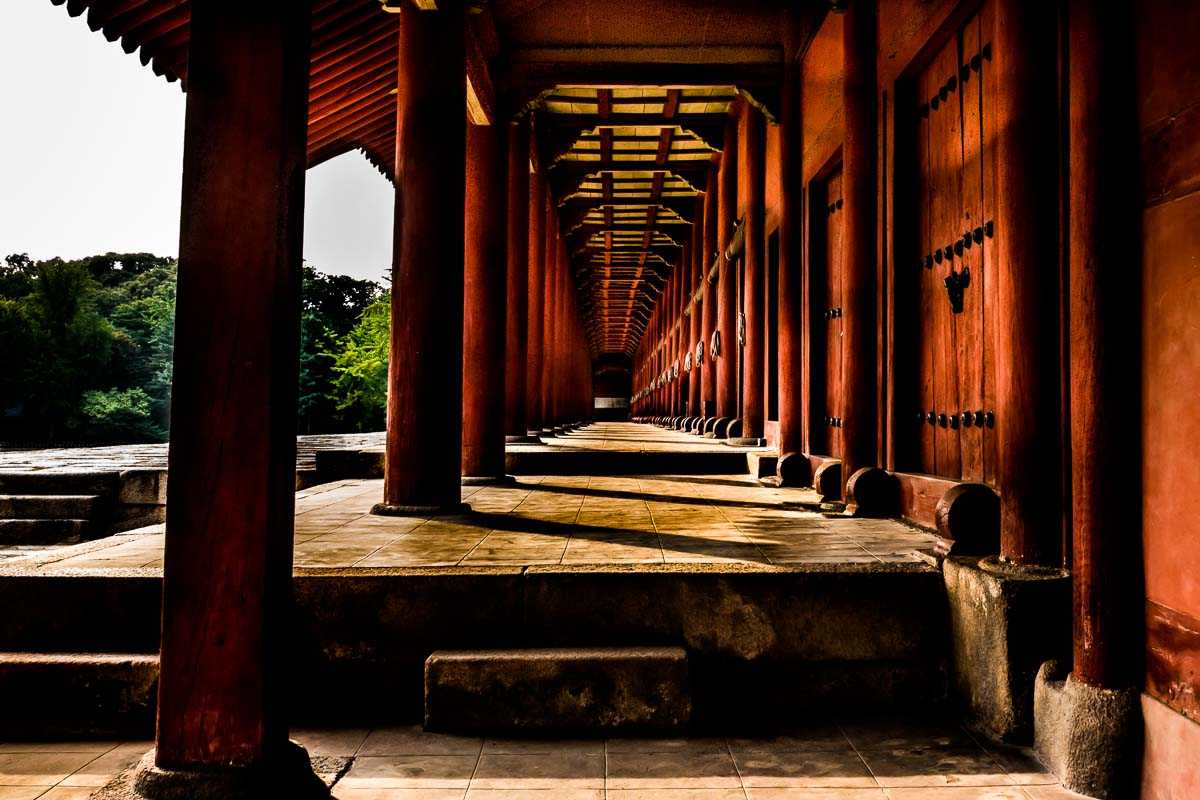
The Jongmyo Shrine in Seoul is a Confucian shrine that was built to serve as the venue for the memorial services of the Korean dynasty that ruled from the 14th to 19th Century.
The rooms house the “tablets” which pertain to the dead kings and queens, and the long row of rooms is not open to the public.
As shrines go, it is rather plain on the outside, with none of the riot of color and figures we recently saw in the Confucian shrine in Taipei. But perhaps, this is a function of its purpose to honor the dead. It's almost more of a mausoleum than a temple. As one of the signs said, the site is not overly adorned, it is meant to evoke solemnity, piety, and sublimity.
I wish I could tell you more about it, but, we visited on Saturday, the only day that tours in foreign languages are not offered. So, we got a rudimentary map and wandered around and looked at the various buildings which are nestled in a wooded park setting at the edge of bustling modern Seoul. The site serves to this day as the staging points for the various components of the rituals to honor the dead kings and queens.
This building, which is the main repository of the tablets, was built in the late 14th Century, and rebuilt in the 17th Century after being destroyed by Japanese invaders. The tablets were preserved, though, because they were hidden from the Japanese.
At the time of its construction, this was said to be the longest building in Asia. I hope the photo gives you a sense of its size. The Jongmyo Shrine is not ornate, but it is beautiful.
The Jongmyo Shrine is a Unesco World Heritage site in South Korea. To see a list of all South Korean Unesco World Heritage sites, click here.
To see a continuously updated list of the Unesco World Heritage sites we've visited, click here.
Up Your Travel Skills
Looking to book your next trip? Use these resources that are tried and tested by us. First, to get our best travel tips, sign up for our email newsletter. Then, be sure to start your reading with our Resources Page where we highlight all the great travel companies and products that we trust. Travel Accessories: Check out our list of all the accessories we carry to make getting there and being there a lot easier. Credit Cards: See our detailed post on how to choose the right travel rewards credit card for you. Flights: Start finding the very best flight deals by subscribing to Thrifty Traveler. Book your Hotel: Find the best prices on hotels with Booking.com. See all of the gear and books we like in one place on our Amazon shop.Got a comment on this post? Join the conversation on Facebook, Instagram, or Threads and share your thoughts!


Comments are closed.